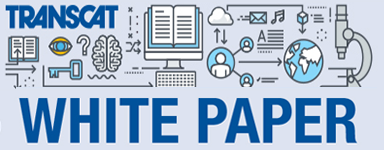

U.S. Industries: Quality Gets a Boost from ILAC
Are your calibrations accredited to ISO/IEC 17025? The number ‘1’ is (or should be) significant to your quality system. Who knew it would become significant in a very different way? On 11/1/11, ILAC (the International Laboratory Accreditation Cooperation) is mandating that all reported measurements, represented by ISO 17025 accredited testing and/or calibration laboratories, include the lab’s measurement uncertainty for each reported value. This change in reporting requirements aligns industries around the globe with the definition of measurement traceability.
Who is ILAC and why should I care? ILAC is the governing body responsible for the worldwide coordination of testing and calibration accreditation. ILAC and its network of cooperative organizations (IAAC, APLAC, etc.) reviews the accrediting bodies (AB’s) work to ensure these AB’s are correctly performing assessments of testing and calibration laboratories against the requirements of ISO/IEC 17025. To state this more plainly, calibration labs (and testing labs) who become accredited against ISO 17025 must be assessed by one of the accrediting bodies who have signed an agreement with ILAC (or through one of the representative cooperatives to ILAC). In the U.S., these AB’s are: NVLAP, A2LA, LAB, ACLASS, and Perry Johnson. For industry, this accreditation network guarantees that the resulting calibrations (or tests) are uniformly reported per international standards and are accepted globally. This standardized reporting format, determined by measurement scientists and government leaders around the world, must contain, at a minimum, the stated value of the SI unit, as represented by the lab’s measuring/sourcing standards, the reported value of the unit under test (your instrument’s value), and the measurement uncertainty surrounding each reported value.
Why has ILAC mandated this? For decades in the U.S., American industry has been slipping regarding its perceived need for calibration/testing results. Many U.S. companies do not believe they need to know their instrument’s calibration values and, therefore, order calibration with no reported data. Because commercial calibration companies and Original Equipment Manufacturers (OEMs) aim to meet their clients’ requirements, they offer differing levels of service, usually at different price levels. This has a circular effect as companies, trying to cut costs, decide that they can save money by purchasing a calibration without data at a lower price. This “enabling’ of industry to buy essentially less meaningful calibrations can be viewed as the tail wagging the dog. The National Measurement Institutes around the globe (NMI’s, such as NIST in the U.S.), together with ILAC and its cooperatives, realize that many consumers of calibration services have missed the point of an established traceability chain and are being conditioned incorrectly to believe that purchasing calibration certs without data is an acceptable practice. The time has come to set this right; to get the dog to wag its tail again. But just getting better information is only half of the equation; you also need to use the data to improve your bottom line; that means understanding how this can help you reduce scrap, waste, rework, and/or recall.
Unbroken Chain of Comparison
The BIPM (Bureau International des Poids et Mesures) establishes the definition of measuring units, particularly Le Systeme International d’unites, which are the SI units of measure. The NMI’s develop and maintain standards, which are the physical realization of the defined units of measure. A comparison of these standards must be made from one laboratory to the next to transfer the defined quantity to your instrument and, eventually, to your products.

Competence
Critical thinking skills are required to apply a scientific approach in determining all the uncertainties that can impact a calibration laboratory’s ability to assess your instrument. Education and experience are an important part of building the competence to perform Metrology work thoroughly and correctly.
Recalibration
Instrument values change over time for a variety of reasons; physical wear during normal usage, aging of electronic components, environmental factors, improper handling and/or storage, etc. Regular calibration of your instruments is required to keep it aligned (traceable) to the global network of measurements.
SI Units
There are seven base units in the SI system: temperature (Kelvin; K), time (second; s), length (metre; m), mass (kilogram; kg), luminous intensity (candela; cd), amount of substance (mole; mol), and electric current (ampere; A). All other units of measure are derived from these base units. There are also non-SI units that are still commonly used.
Uncertainty
Measurement uncertainty is a key part of passing the baton of traceability. It is one part of traceability that is often misunderstood or too easily dismissed. But, without it, your measurements have lost their link to the global network that has been established to keep you from taking unnecessary risks.
Documentation
The documentation can be viewed as “the baton”, upon which is recorded the essential information required to pass traceability on to the next step in the chain, and eventually to your products/services!
Measurement Assurance
The way you use your measuring instruments is a very important part of measurement assurance, it’s not just the calibration lab’s responsibility— you must apply the measurements properly too and understand how errors can creep into your measurements and find ways to keep them at a minimum or eliminate them altogether!
Keeping your instruments aligned to the global network of measurement via traceability is the only way you can minimize the risk associated with the instruments you use daily to make the call as to whether your product, or components of your product within the manufacturing process, are good or bad. If these instruments are not providing reliable values, you could be failing good product or passing bad product, either of which can have heavy costs associated with them. Understanding where these risks lie can only be determined by carrying the baton of traceability all the way through—up to and including your products.
